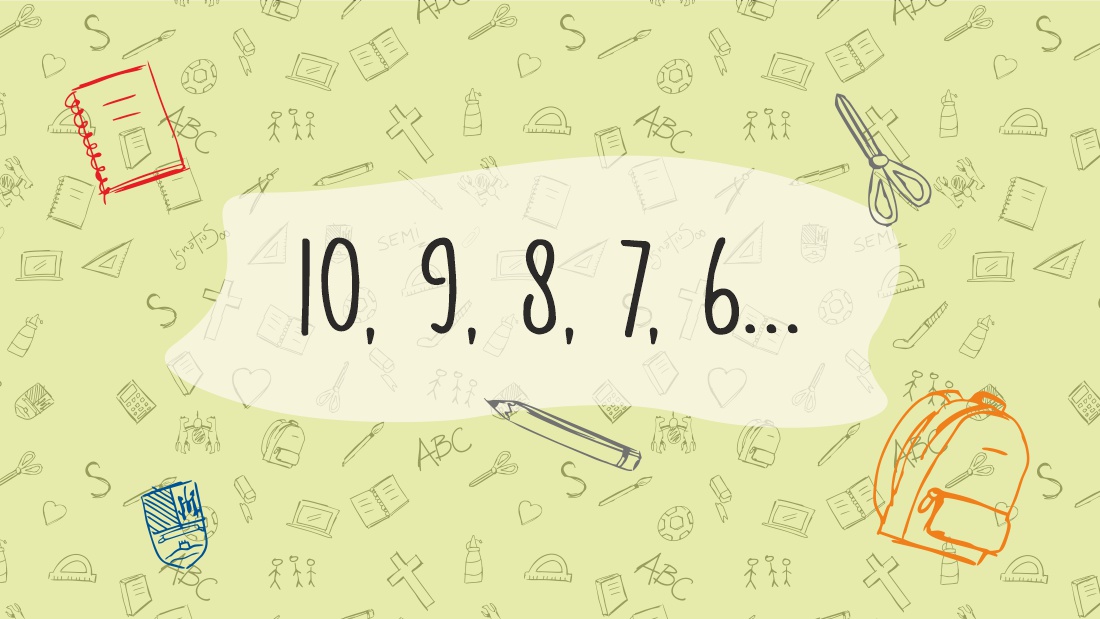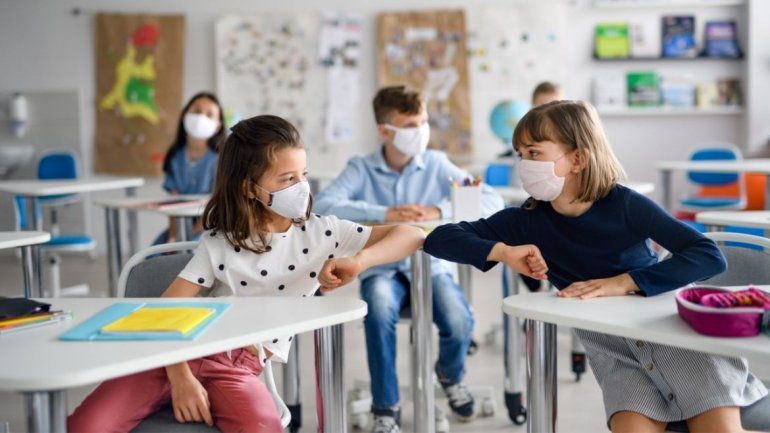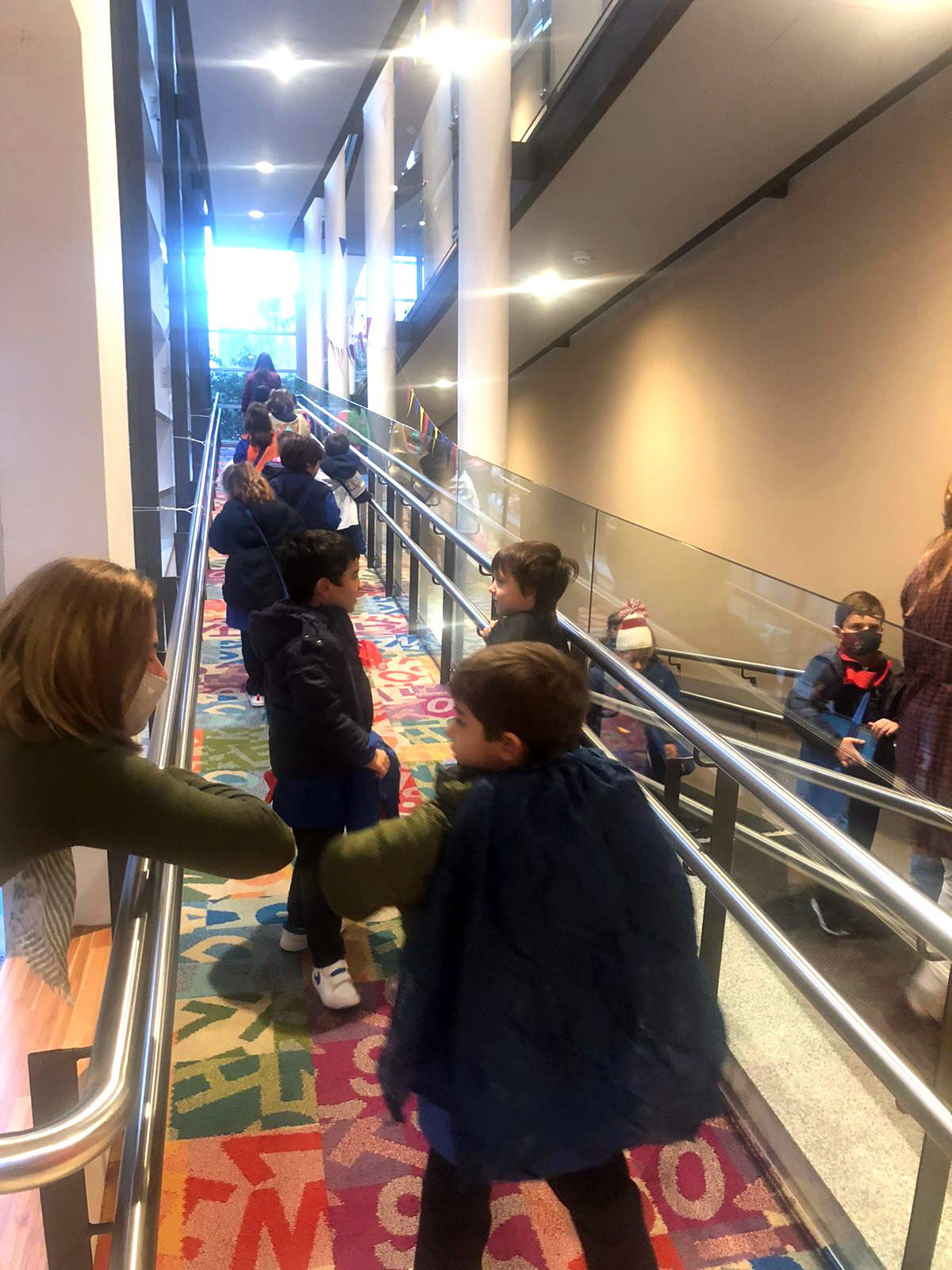
«The installation of the new normality for social coexistence
has given us various lessons that we have managed to learn,
assimilate and transfer to our collective reality,
"both at the intra-family and institutional level."
10, 9, 8, 7, 6,…The countdown has started to announce that the new school year will soon begin. It is a time when emotions and a mixture of sensations are the order of the day. In general, children await the day of the beginning of classes with great anticipation. They prepare or “mentalize” that the vacation routine is coming to an end and a new rhythm of functioning will begin, both at home and at school. It is also a period where the desire and enthusiasm to meet friends grows, the curiosity to meet new classmates and the teachers who will be there this year is becoming stronger and, of course, the excitement of being able to return to school and make contact with their new classroom, their playgrounds, the cafeteria, the gym and other spaces of coexistence that make up our educational community is palpable.
The installation of the new normal For social coexistence, it has given us various lessons that we have managed to learn, assimilate and transfer to our collective reality, both at the intra-family and institutional level. Sometimes with some tension and other times with greater acceptance. It has been a period of constant accommodation and adaptation, which has not been easy and has taught us some operating strategies that today become our certainties. Faced with a start to the year that presents itself with the same excitement as always and with some features of uncertainty, we think it could be helpful to offer you some guidelines that collaborate with the prior preparation that, as a family, you are experiencing.
Let's pack our backpack!
For many children and teenagers, it is a time of excitement and joy as they choose those objects with the affection of knowing that they will accompany them for the rest of the school year or for as long as they can use them. To acquire them, they often turn to different shopping centers that offer options of pencils, highlighters, drypens, crayons, rulers, notebooks with different designs, erasers and pencil sharpeners that seem to talk. It is an opportunity to accompany them in their new choices and also to be able to guide them in the purchases they make. Especially for the youngest children, it is important to supervise the choices and advise them on which materials are best for them.
A first key to this is to buy what is requested from the school and no more. Also, while fancy backpacks, pencil cases and pens are very nice, they do not always help the child to concentrate since it is much more entertaining to organize the 4-story pencil case than to pay attention to the algorithms. Also, before making the list of new purchases, you can review together which supplies from previous years can still be used, or can be kept at home as a backup to do homework or replace lost items. Also, when estimating the units to be purchased, it could be practical to foresee the losses that may occur during the year, since buying in larger quantities allows for savings and not having to buy specific supplies at different times of the year. Once we have the materials ready, we recommend that as a family you can label each material, the new ones and the recycled ones, so that each one can identify their belongings and take ownership of their new resources for learning.
Taking care of yourself is taking care of ourselves!

One of the lessons that this time of uncertainty has left us at a health level is the importance of adopting new habits of personal care and hygiene. These practices that have become established are added to those that are part of our daily routines. In this sense, it is necessary not to forget the basic rules of good hygiene.1: (a) wash your hands regularly and carefully with hydroalcoholic gel or soap and water; (b) avoid touching your eyes, nose and mouth; (c) when coughing or sneezing, cover your mouth and nose with your bent elbow or with a tissue; (d) make the use of a face mask a normal part of interaction with other people; (e) avoid crowds and interact within the same bubble.
Routine, a good ally in times of uncertainty
In addition to these new habits that we must include in our daily lives, it is necessary to adapt to routines again, which is perhaps the most difficult part of this period. Many adults find it difficult to say goodbye to the holidays and find ourselves in tune with normal schedules, such as going to bed and getting up, preparing what is needed for the next day, etc. Our children feel exactly the same way.
It is likely that some families have begun to gradually adjust sleep schedules, social activities, and family and leisure time. This is very important and helps us with the process of going back to school. When school starts, they actually understand the message that they have to readjust again and, regardless of the joy they may feel for the new things that await them, it is a process that takes time to accept and incorporate, operationalize in the family dynamic, and sustain systematically.
We invite you to accompany them, and while parents gradually encourage their children's autonomy and responsibility, at the beginning of the adaptation process we suggest that they have some flexibility when establishing the routine guidelines to be adopted at home. For example, accompanying them so that they go to sleep and bathe at a suitable time, supervising that they have the necessary materials and uniforms ready, reminding them of the tasks they have to do and the schedule for the next day, and how they will leave school, among others.
Let's talk!

In the midst of this changing scenario, it is important to provide our children with the emotional security and stability they need at home. To do this, it is recommended to create spaces for dialogue within the family, where they can express what they feel and experience at this stage in school. Teaching them to recognize and express their emotions helps them to better navigate the challenges of the school year, accompanies them in the process of integrating into the class group, and gives them time to listen to how they feel in the relationship with their teacher or course teacher. Also, being able to have the time to discuss mobility and functioning routines within the school is an opportunity to gradually incorporate them. We believe that it could be good for family members to include this meeting daily to talk and be able to catch up on what they experienced during the day outside the home. It can be during the time of preparing dinner, or at the time of gathering at the table, or also before going to sleep and saying goodbye until the next day. This will give them the certainty that there is an exclusive time to talk with their parents and express the lights and shadows of the day lived. In addition, these conversations allow us to anticipate and find solutions to possible situations that may trigger fear, anxiety, or worry, and give us the peace of mind that we can face and resolve them together. Finally, it is an opportunity to review what we have experienced, to give thanks and to identify aspects that need improvement, both at school and at home.
We wish you a very good start to school! From the Department of Psychology and CounselingWe are available to support you on this return and, of course, throughout the year.
Lots of encouragement and patience! 5, 4, 3, 2, 1!!!!
Agustina Fernandez, Maria Panario and Martina Silva
Graduates in Psychopedagogy